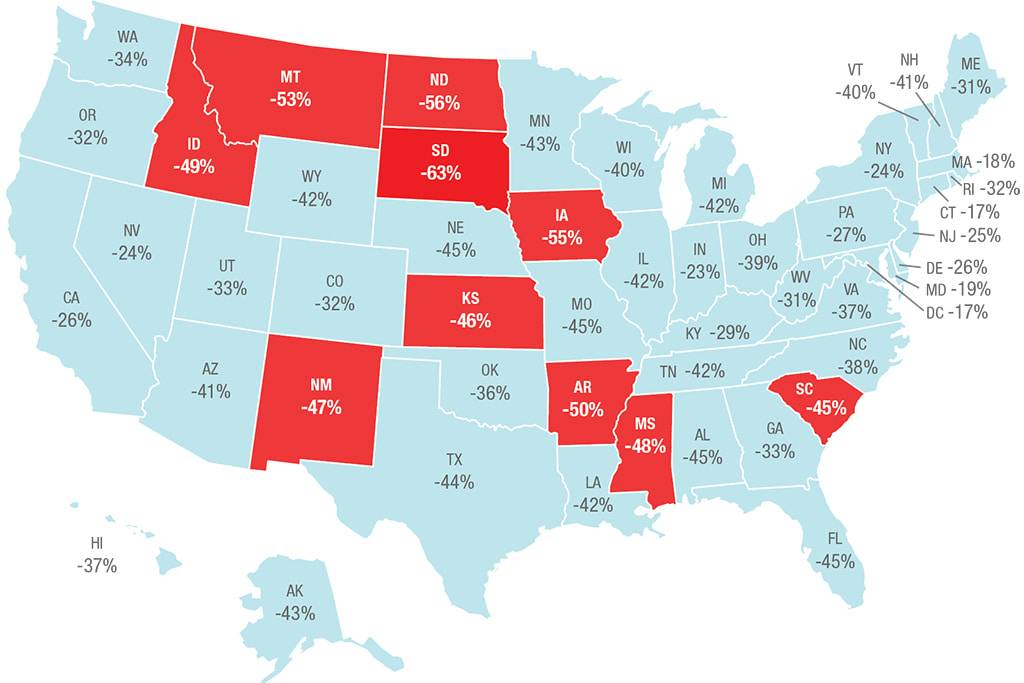Your State Could Decrease Teen-Driving Fatalities


The Insurance Institute for Highway Safety has been studying graduated driver licensing laws across the country and has found, not surprisingly, that the states with the strictest GDLs also have the lowest teen-driving fatality rates. States with the biggest opportunity for improvement? South Dakota and Iowa.
Related: AAA: Distracted Teen Driving Worse Than We Thought
There are five major pieces of the GDL pie that contribute to saving lives. According to IIHS, those are:
Permit age: While most states allows teens to obtain a learner’s permit at age 15 or 151/2 (or even as young as 141/2 in Montana), Connecticut, Delaware, District of Columbia, Kentucky, New Jersey, New York, Pennsylvania, Massachusetts and Rhode Island don’t allow teens to get a learner’s permit until the age of 16.
Practice driving hours: Once a teen has received his or her learner’s permit in Maine at least 70 practice driving hours supervised by a guardian or instructor must be logged before a teen can proceed onto the next GDL level with an intermediate license. As a comparison, this number is 50 in my home state of Colorado.
License age: New Jersey only allows teens to obtain their intermediate license when they’re 17 years old (it’s 16 in most states). An intermediate license allows teens to drive, but with some pretty strict restrictions. Some of these restrictions in New Jersey include a license plate sticker denoting their status, driving with only one passenger in the car (no carting a carful of teens to a party) unless a guardian or parent is present, a driving curfew from 11 p.m. to 5 a.m., no interaction with hand-held or wireless technology and, of course, seat belts must be worn at all times.
Restrictions on night driving and passengers: Before teens are able to obtain a restriction-free driver’s license, many states have night-driving restrictions. In South Carolina teens cannot drive after 6 p.m., and in Idaho they cannot drive after sunset. Vermont on the other hand has no restriction on night driving for teens. IIHS notes that, “Enacting an 8 p.m. restriction … would reduce Vermont teens’ fatal crashes by an estimated 20 percent.”
Now back to South Dakota: tsk, tsk! If South Dakota were to adopt the strictest of standards seen in other states, it could, theoretically, decrease teen-driving fatalities by a whopping 63 percent. Iowa could decrease its teen-driving fatalities by 55 percent. Just imagine what that could mean for your family. That could mean the difference between shopping for your daughter’s prom dress versus planning your child’s funeral.
My oldest daughter is turning 15 this summer, which in Colorado is the minimum age for obtaining a learner’s permit. This has me wondering, are there any families who are well educated on these statistics and have decided to enact their own “best practices” that might be more stringent than their state’s laws?

Former Senior Family Editor Kristin Varela blends work and family life by driving her three tween-teen girls every which way in test cars.
Featured stories



